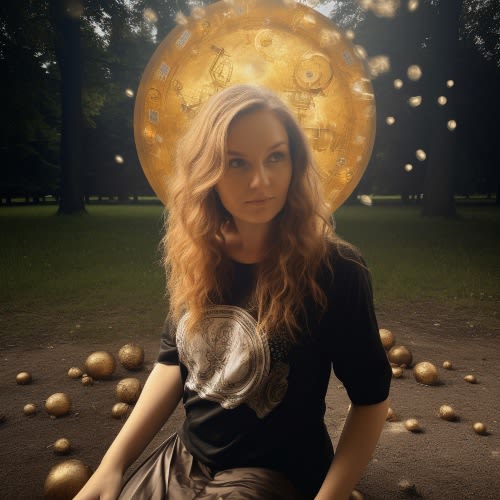Of all divination contraptions, the Magic 8-Ball is one of the most recognizable and popular. It looks stylish, is easy to use, and doesn't involve any scary connections to otherworldy beings because it is just a toy that can give instant answers to simple "yes-no" questions.
The popularity of the Magic 8-Ball can be explained by how user-friendly it is: you needn't embrace crystal ball divinations or learn the intricacies of the Ouija board. Just think of a question, ask the Magic 8-Ball, turn it over, and—"without a doubt"—your answer will show in the viewing window.
On the inside, the ball is filled with dark blue liquid. A 20-sided die is floating in the center of it. On all sides, there are Magic 8-Ball answers printed in raised letters: ten positive options, five negatives, and five evasive ones, e.g., "Reply hazy, try again." The 10/5/5 proportion ща the Magic 8-Ball saying was decided upon with the help of a professor of psychology from the University of Cincinnati.
The story of the ball creation is not buried in mystery; rather, it is a series of marketing decisions, both good and bad. Let's see how it came to be and evolved throughout history.
Where Did the Idea for the Magic 8 Ball Come From?
The beginning of the Magic 8-Ball fortune teller was really commonplace. The first version was devised and constructed in Cincinnatti in the 1940s by the son of a professional clairvoyant, Albert Carter. However, it did not give the standard Magic 8-Ball answers back then. In fact, it wasn't even initially called the Magic 8-Ball—because it was not a ball! The Syco-Seer—that's what the device was called—was a hollow tube divided in half and filled with a dark liquid. Each half contained a regular die with responses printed on its six sides. The answers were revealed in the windows at the ends of the tube when the user asked a question and flipped the Syco-Seer.
A couple of years later, Albert Carter was joined by his relative Abe Bookman. Together, they started a toy company Alabe Crafts, hoping to market and sell their divination device.

The Magic 8-Ball started as a promotional item for a billiards company
The sales, however, did not skyrocket immediately, regardless of the excellent promotional campaign the toy-makers devised: the Syco-Seer was demonstrated by women in gypsy-style clothing. In 1948, when, sadly, Albert Carter passed away, Abe Bookman redesigned the device to make it resemble a fortune-teller's crystal ball—and called it the Crystal Ball. This marketing move improved the sales, but, alas, only minimally. The situation seemed hopeless until Brunswick Billiards showed a great interest in the device. They commissioned Alabe Crafts to create a unique billiards-themed version of the Crystal Ball for a promotional campaign. And this was when the Magic 8-Ball as we know it was finally built.
Brunswick Billiards' promo was a howling success. When it ended, Alabe Crafts started mass producing the so-called Magic 8-Ball. In 1971, Alabe was purchased by a bigger company. In 2012, after a series of acquisitions, the toy ended up with Mattel. Since then, its sales have averaged 1 million units per year.
From Paperweight to Toy
There is an exciting twist in this story. We are used to calling the Magic 8-Ball a toy or a divination device, but it was initially sold as a paperweight! At least, this was how Abe Bookman identified the contraption until he saw it was a big hit with children. This revelation—and consequent remarketing— added to the success of the Magic 8-Ball. In several decades it became one of the hundred greatest toys of all time, according to TIME Magazine.













Did you like the article?
Response
Superb
Love
Wow
Sad
Laugh
Angry